Introduction
In the competitive landscape of modern marketing, businesses are constantly seeking innovative strategies to capture and retain customer attention. Gamification has emerged as a powerful tool, transforming traditional engagement methods by integrating game-like elements into everyday interactions. By utilizing features such as points, badges, and leaderboards, companies can create dynamic experiences that not only enhance user participation but also foster lasting loyalty.
This article delves into the multifaceted world of gamification, exploring its potential to revolutionize customer engagement, the importance of understanding diverse player types, best practices for designing compelling experiences, and successful real-world applications that demonstrate its effectiveness. As organizations strive to create more personalized and entertaining interactions, the strategic implementation of gamification could very well be the key to unlocking deeper connections with customers.
Understanding Gamification: A Tool for Enhanced Customer Engagement
Gamification involves the incorporation of game-like elements into non-gaming contexts, particularly within marketing and customer engagement strategies. By employing features such as points, badges, leaderboards, and challenges, businesses can create interactive engagements that drive user participation and foster loyalty.
A notable example is Volkswagen's 'The Fun Theory,' which effectively employed playful engagement through initiatives like the 'Piano Stairs' experiment to promote positive behavior change. This campaign not only promoted sustainable behavior but also made the activity enjoyable and engaging.
Studies, including those carried out by [source], indicate that businesses applying game-like elements see a 20% increase in customer engagement and a 30% improvement in customer retention rates.
With over 20 years of global experience, we understand how to create products that resonate with your community while aligning with your internal goals. As the demand for personalized and entertaining interactions grows, game-based strategies emerge as an essential tool for enhancing engagement and nurturing enduring customer relationships.
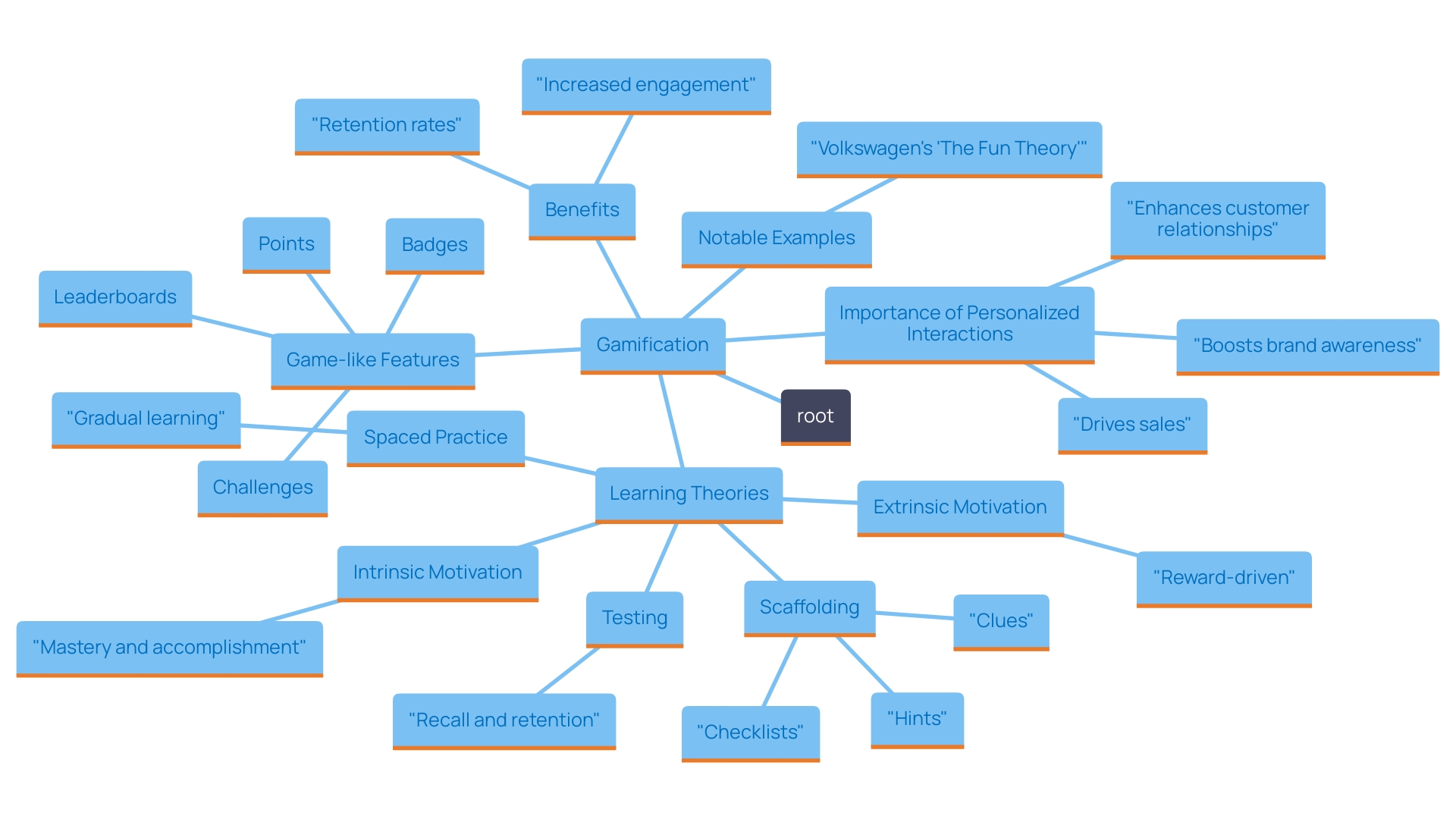
Identifying Player Types: Tailoring Gamification Strategies for Diverse Audiences
The emergence of game-based elements has been significantly influenced by cultural shifts and advancements in technology, creating an environment ripe for its adoption. Gamification categorizes players into distinct types based on their motivations:
- Achievers: Approximately 30% of players identify as Achievers, driven by goals and accomplishments.
- Explorers: 25% as Explorers, who seek discovery and new experiences.
- Socializers: 20% as Socializers, thriving on interaction and community.
- Killers: 25% as Killers, who enjoy competition and challenges.
Ian Bogost, an author and game designer, aptly notes, 'Finally someone’s noticing. 'They realize that we have something to offer,' which underscores the growing recognition of its potential. However, despite its promise to enhance engagement and happiness, the use of game-like elements has faced criticism for potentially becoming a tool of coercion, distraction, and control. Critics argue that it can manipulate users into behaviors that may not align with their genuine interests, raising ethical concerns that merit consideration.
Understanding the primary player types within your audience facilitates the customization of engagement strategies to meet specific needs and preferences. For instance, incorporating leaderboards may appeal to Achievers, while creating collaborative challenges could resonate with Socializers. Our tailored e-commerce solutions, built on over 20 years of experience, significantly enhance key performance indicators (KPIs) such as retention rates and Average Order Value (AOV), while also fostering community value. A case study titled 'Reality and Gamification' examines how game-based strategies, grounded in the idea that reality is flawed and not sufficiently engaging, seeks to make routine tasks more enjoyable. However, the expected joint and optimistic results have not completely come to fruition, indicating the complexity of effectively applying game-based approaches.
By identifying these player types and motivations, e-commerce directors can create more effective and engaging game-based strategies. This ensures that the strategies resonate deeply with each segment of their audience, ultimately enhancing community engagement and driving incremental revenue.
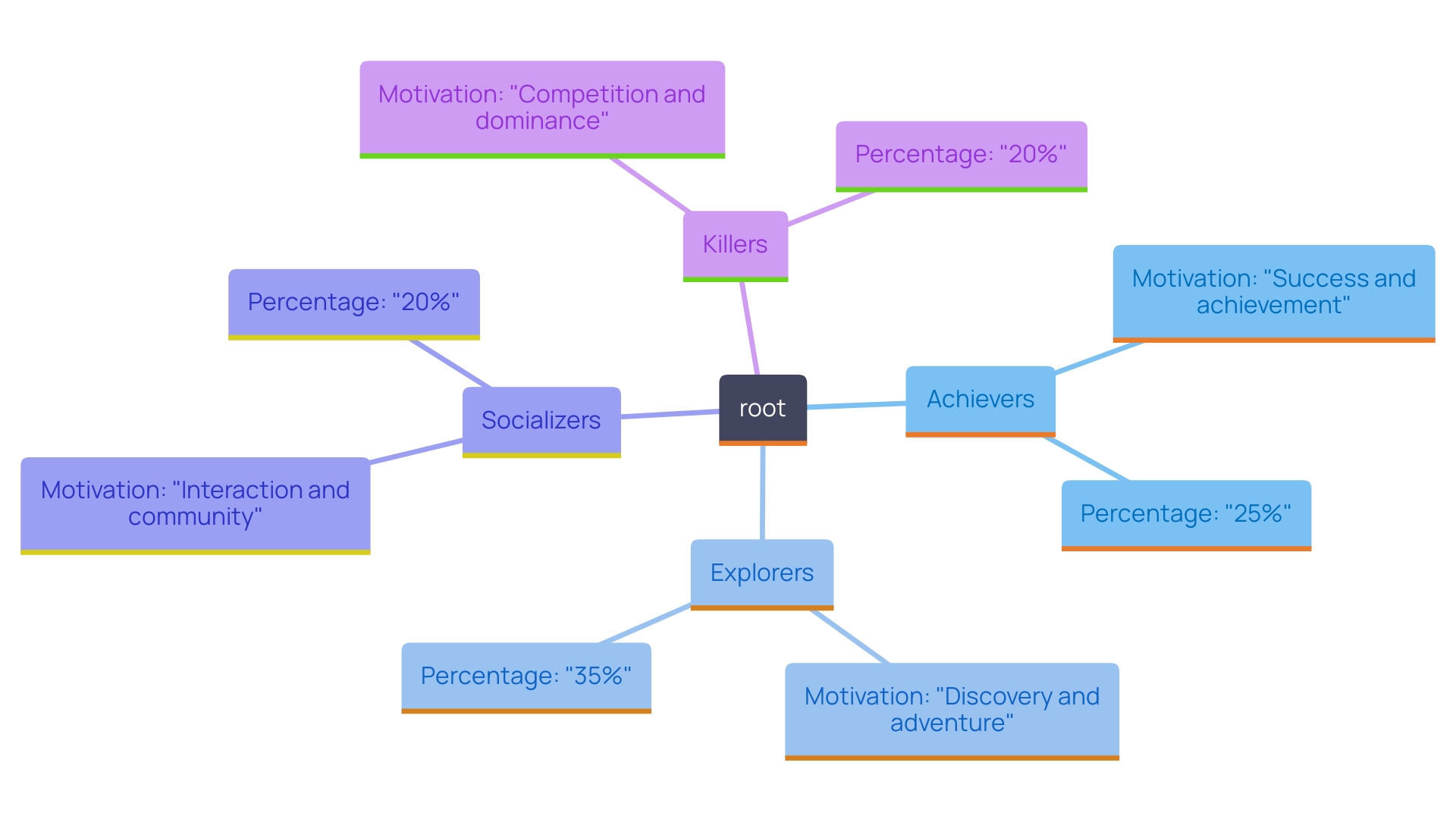
Best Practices for Designing Engaging Gamification Experiences
To design engaging gamification experiences, follow these best practices:
-
Define Clear Objectives: Establish what you hope to achieve with gamification, such as increased engagement, higher sales, or improved customer loyalty. For instance, an employee engagement platform that clearly set goals related to sales performance saw a 28.5% increase in revenue and a 59% boost in key performance indicators. Clear objectives not only guide your strategy but also align your team’s efforts towards measurable outcomes.
-
Incorporate Feedback Loops: Provide instant feedback to participants to keep them motivated and informed about their progress. Effective feedback loops can significantly impact engagement; for example, the Octalysis Group’s work led to a 175% performance enhancement for an airline loyalty program, demonstrating how timely feedback can transform experience and commitment.
-
Make It Inclusive: Ensure that the game elements are accessible to all types of individuals, accommodating varying skill levels and preferences. Inclusivity can improve the overall participation rate and effectiveness of the engagement approach, as a varied participant base often results in richer interactions and wider insights.
-
Leverage Storytelling: Create a narrative around your gamification strategy to make it more engaging and relatable. A well-crafted tale not only captivates players but also contextualizes their accomplishments within the game. This connection can significantly enhance their investment in the event. Consider sharing success stories from past participants to illustrate the journey and impact of engaging in gamified activities.
-
Test and Iterate: Regularly assess your engagement strategies and gather participant feedback to refine and enhance the experience. Continuous improvement is crucial, as shown by the Diet DASH project at Drexel University, which reported significant outcomes such as reduced sugar intake and weight loss among participants. Iteration based on participant feedback ensures that your engagement efforts remain pertinent and effective.
Applying these best practices can significantly enhance the effectiveness of your engagement initiatives, driving higher involvement and better results. By aligning your approaches with user feedback and engaging narratives, you can create experiences that resonate with participants and foster long-term loyalty.
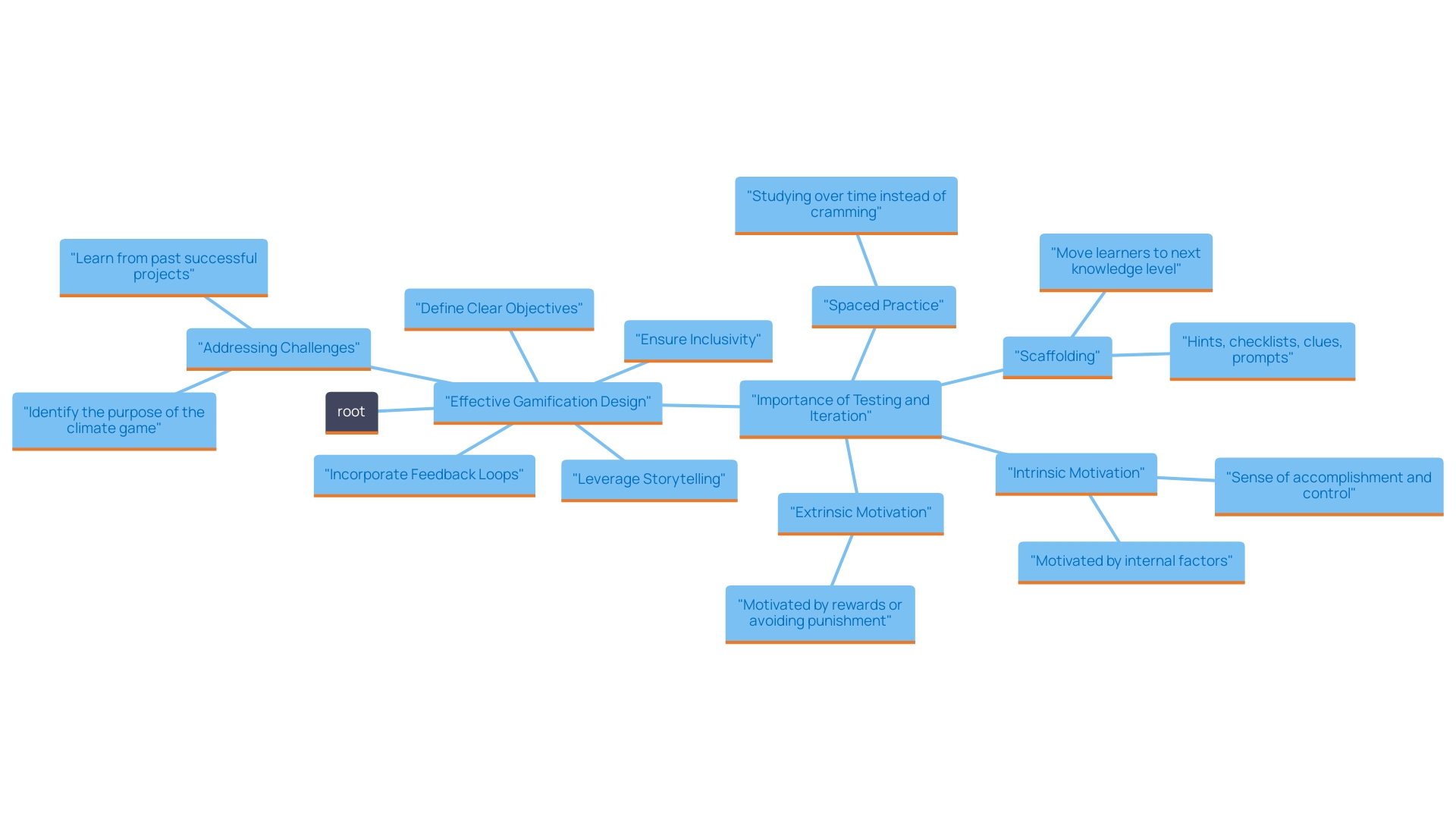
Real-World Applications: Successful Case Studies of Gamification in Marketing
Several brands have successfully implemented gamification in their marketing strategies:
- Starbucks: The Starbucks Rewards program incorporates game-like features such as points, levels, and badges to promote customer loyalty. Members earn stars for purchases, which they can redeem for rewards, driving repeat visits.
- Duolingo: This language-learning application utilizes game-like elements by incorporating levels, streaks, and rewards to encourage individuals to practice daily. Users can compete with friends, enhancing engagement through social interaction.
- Nike: Nike's app includes challenges and achievements that encourage users to meet fitness goals. By gamifying exercise, they create a community of motivated individuals who share their progress.
These case studies illustrate the impact of game-based strategies in creating captivating customer interactions and promoting brand loyalty.
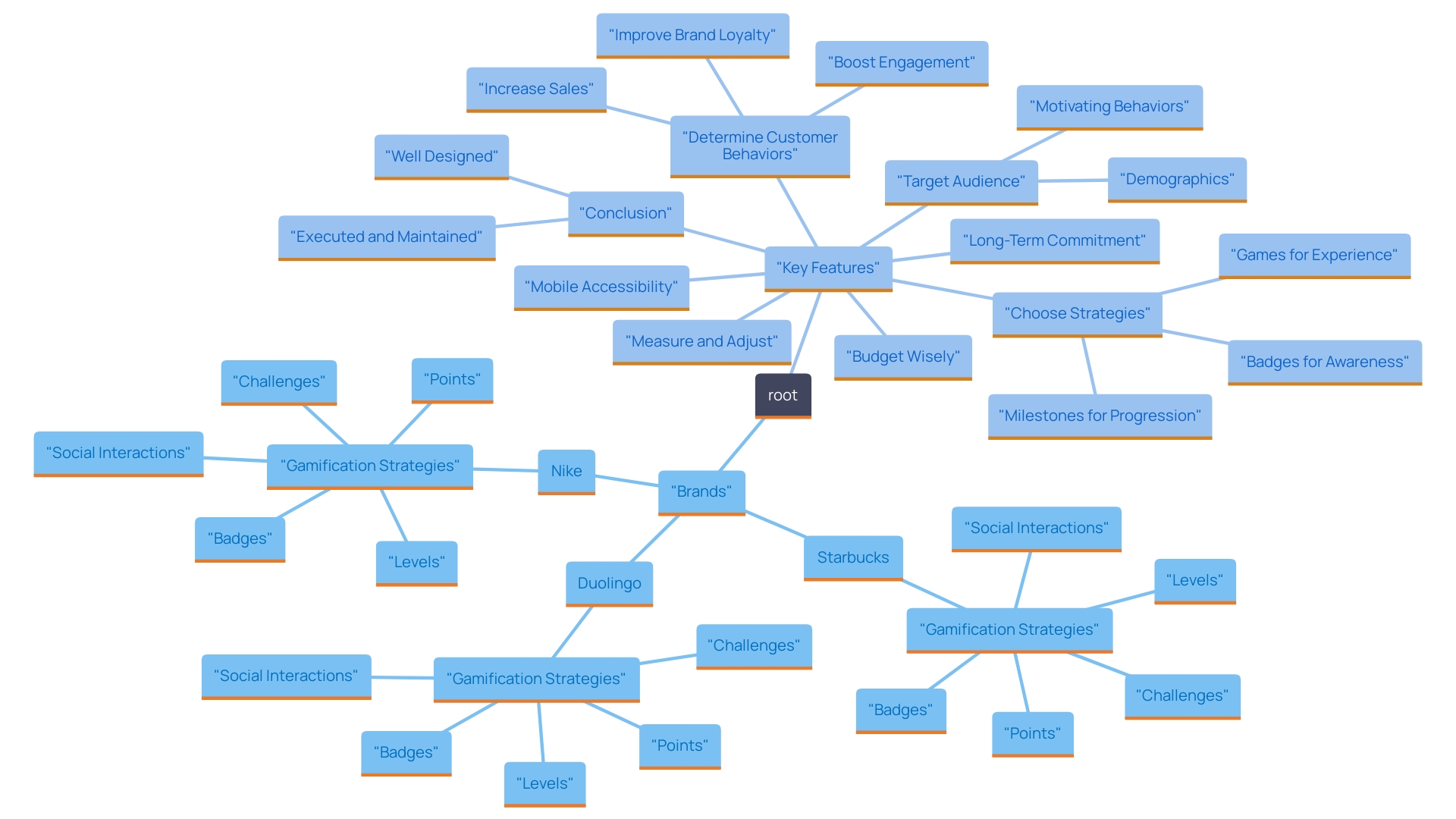
Measuring the Success of Gamification Initiatives
To measure the success of your gamification initiatives, consider the following metrics:
- User Engagement: Track participation rates, session times, and interactions within the gamified experience.
- Conversion Rates: Examine how game-based strategies affect sales and conversions by tracking participant behavior before and after implementation.
- Customer Feedback: Collect qualitative data through surveys and reviews to gain insights into client satisfaction and areas for improvement.
- Retention Rates: Assess how game-like elements influence customer loyalty by monitoring repeat purchases and user retention over time.
By regularly analyzing these metrics, you can ensure your gamification strategies remain effective and aligned with your marketing goals.
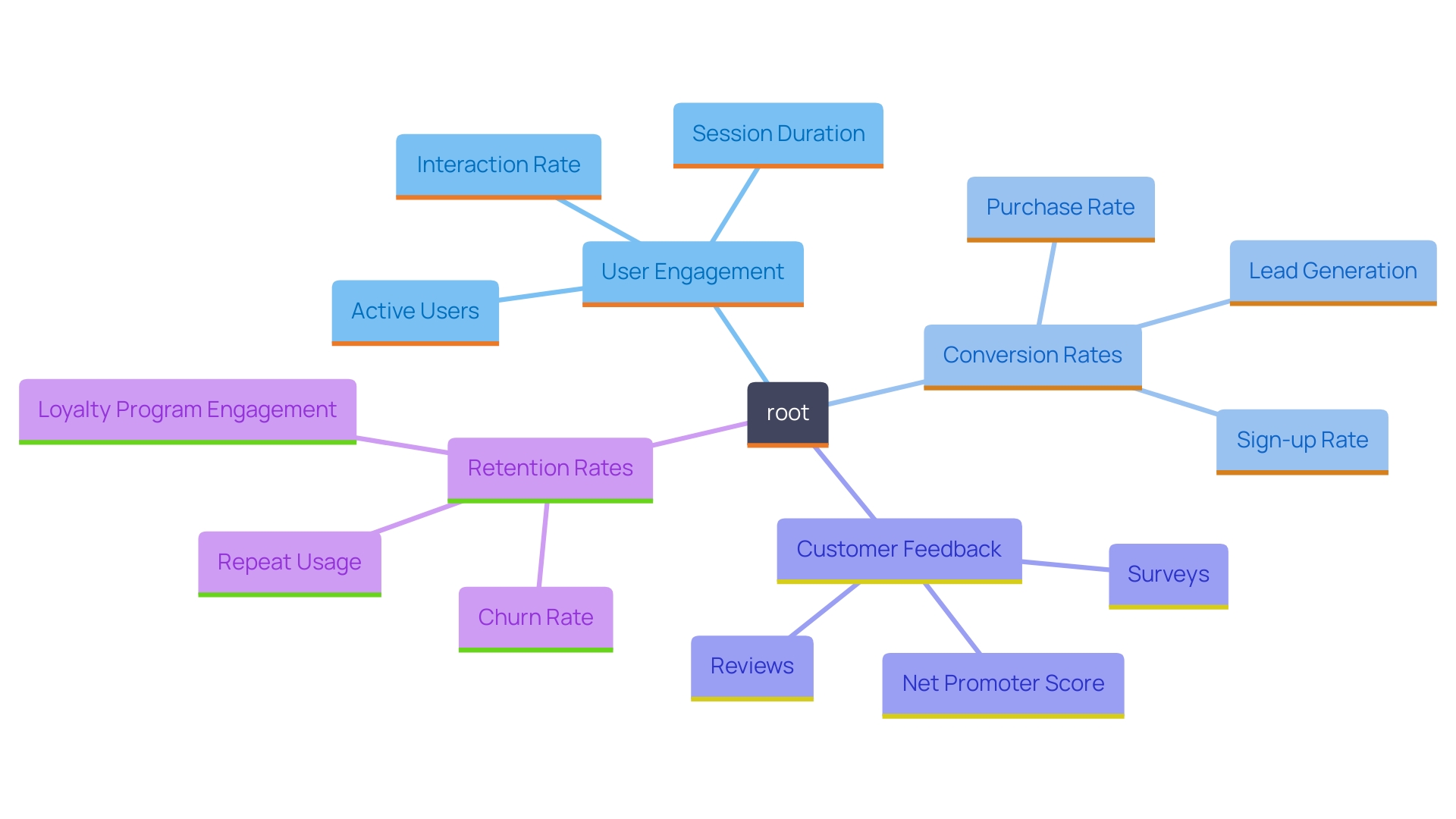
Conclusion
In the rapidly evolving world of marketing, gamification stands out as a transformative strategy that enhances customer engagement and loyalty. By integrating game-like elements such as points, badges, and leaderboards, businesses can create interactive experiences that not only captivate users but also drive significant improvements in retention and participation. The exploration of player types further emphasizes the importance of tailoring gamification strategies to meet diverse audience motivations, ensuring that every customer feels valued and engaged.
Implementing best practices in gamification design is crucial for achieving desired outcomes. Clearly defined objectives, inclusive elements, effective feedback loops, and compelling storytelling can significantly elevate the user experience. Real-world examples, such as Starbucks and Nike, illustrate the tangible benefits of gamification, showcasing how these strategies foster deeper connections between brands and their customers.
Ultimately, the strategic application of gamification can unlock new levels of engagement and loyalty, positioning businesses to thrive in a competitive landscape. As organizations continue to innovate and adapt, embracing gamification may very well be the key to not only capturing customer attention but also nurturing lasting relationships that drive success.





